Short Swords 101: A Comprehensive Guide to Types, Techniques, and History
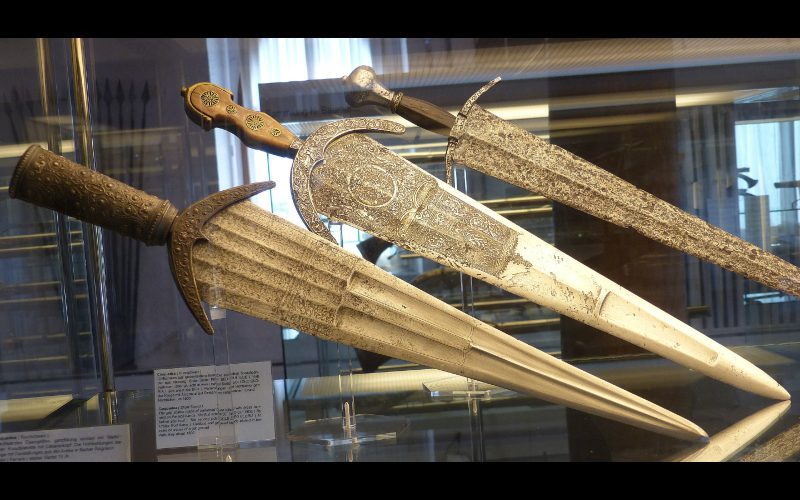
What’s in this article?
Almost every culture has its own version of a short
Let us explore the most popular short swords from different cultures, their history, metallurgy, and unique characteristics.
Different Types of Short Swords
Some short swords were more efficient in thrusting, while others were for cutting. Here are the most popular short swords, from ancient Greece to medieval times and the Renaissance period.
1. Xiphos (Greece)

The xiphos was a cut and thrust
The xiphos usually had a blade length of around 50 to 60 centimeters, though some examples were as short as 30 centimeters. The hoplites used it for thrusting in close combat, hung in a sheath under the left arm. The Greek term xiphos is just a generic term for a
2. Kopis (Greece)

When the spear broke during fighting, the Greek hoplites utilized the kopis to deliver a blow with the same power as the ax. It featured a single-edged forward-curving blade that could inflict wounds with a downward slash. On the other hand, the back edge added weight to the weapon towards its tip.
A one-handed
3. Gladius (Rome)
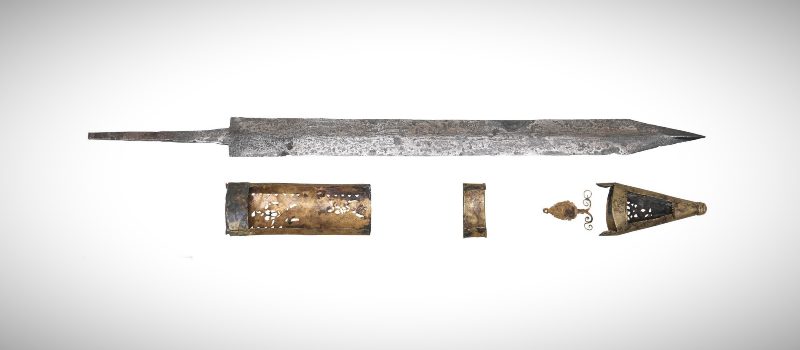
The Roman legions traditionally used a gladius, a short
The earliest gladius had longer blades, but the Pompeii gladius generally had a blade length ranging from 42 to 55 centimeters. It also featured parallel cutting edges and a triangular tip ideal for stabbing. On the battlefield, the leader traditionally led the attack, followed by gladius-wielding soldiers and then by the spearmen. By the 2nd century CE, the Roman cavalry
4. Falcata (Iberian)
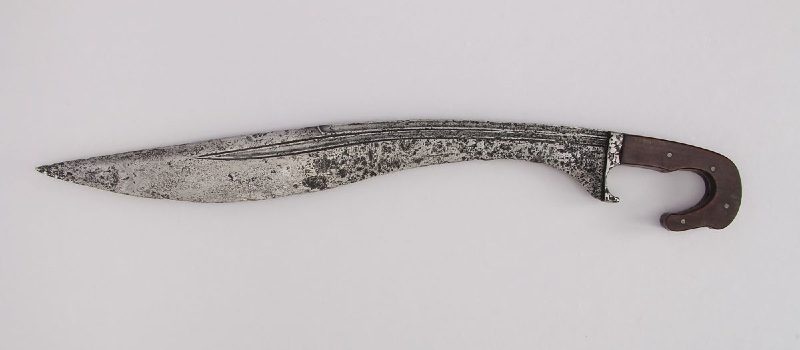
During the Roman conquest of the Iberian Peninsula, the Iberian warriors including the Celtic and Lusitani people wielded their short
The Iberian falcata usually ranged from 60 to 70 centimeters long, though the Lusitanian falcata was shorter at about 40 to 50 centimeters long. It is unnaturally heavy near the tip, making it capable of delivering a lethal blow.
5. Sax (Viking)
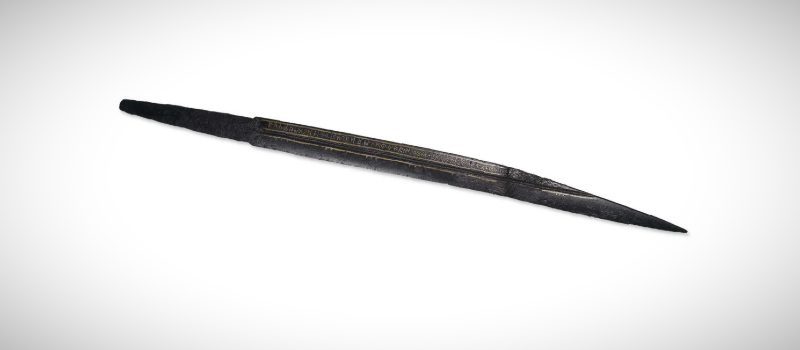
Most weapons in the Viking Age were multipurpose, suited for both combat and hunting. The Viking sax was ideal in tight formation as a warrior could wield it without significant movements. Its broad and heavy blade design suggests that it functioned as a cutting weapon, though the sharply angled tip was ideal for thrusting.
The Viking sax is often referred to as a fighting knife, though it was larger and heavier than most modern knives with a blade length ranging from 30 to 60 centimeters. Some blade shapes also featured gradual tapering to the front while others had a pronounced curve. However, it is unclear if there was a distinction between a short
Most of the time, the long Viking swords featured a crossguard while fighting knives only had a wooden handle without a guard. The Vikings likely used the sax defensively as using it for parrying without a guard would have risked the unprotected hand. The Anglo-Saxons also used the sax, sometimes spelled seax as their fighting knife.
6. Arming Sword

Also known as the knightly
Many erroneously call the arming
7. Wakizashi (Japan)
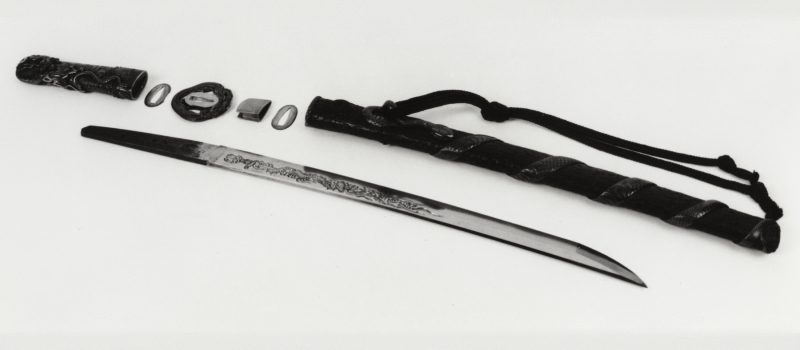
When Japan was in constant war, the samurai carried the shorter
The katana and wakizashi are both curved and single-edged. The former has a blade length of over 60 centimeters long, while the latter is about 45 centimeters long. The samurai used the wakizashi in close-quarter fighting and seppuku or self-disembowelment. Those who were not samurai like the farmers, merchants, and craftsmen utilized the short
8. Baselard

The Middle Ages were rough times as citizens were often robbed and attacked. A late medieval short
9. Katzbalger
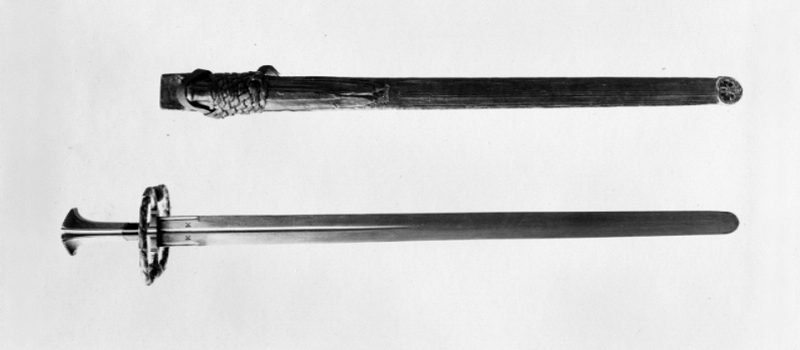
A short Renaissance arming
The term katzbalger likely comes from the Middle High German verb balgen, which means to brawl while the term katz is likely a corruption of the word kurz for short. In some interpretations, the origin of the name probably comes from the traditional carrying of a
10. Cutlass

The cutlass is a short, broad saber and the favored weapon for hand-to-hand combat at sea. Its name comes from the Latin cultellus, meaning short
During the age of fighting sail, cutlass was efficient in close quarters combat and able to cut through heavy ropes and rigging. It served as the official weapon of the U.S. Navy until 1949 and remains relevant on certain occasions carried by some officers in Royal navies.
Arming Sword vs. Longsword
Compared to the medieval longsword, many refer to the arming
A single-handed
Some collectors associate the longsword with the hand-and-a-half sword, but the latter was more of a hybrid
General Characteristics of Short Swords
Early swordsmiths crafted the finest short swords based on the available resources and technology of the time, continuing improvements in hammering, forging, and tempering. Here are the general characteristics of the short swords:
Type of Steel
The earliest short swords were bronze-made as the metal hardens when hammered. The Greek xiphos traditionally had bronze or iron blades as the metal can be easily formed into a leaf shape.
In the early Iron Age, Celtic swords were made from relatively soft steel, equivalent to wrought iron today. The Viking sax also required a relatively small amount of iron, yet it could double as a functional tool and combat weapon.
Outside Europe, Japanese swordsmiths crafted the wakizashi from the tamahagane steel, smelted from a traditional furnace. Unlike other swords that required a shield, the samurai
Today,
Blade Appearance
Sword blades came in a variety of shapes including straight and curved. Straight ones were best for thrusting while curved blades functioned as slashing weapons. Earlier swords often featured raised central ridges to strengthen the structure, but later swords were usually lightened using grooves or fullers.
Size and Length
The functional qualities of bronze or iron as a material likely limited the length of earlier swords. Most short swords have a blade length between 30 to 60 centimeters except for the arming
Some knives are also large enough to be considered short swords, especially the Viking sax. The overall length of short swords may also vary as some functioned as a one-handed sword, particularly the arming
Sword Mounting
Short swords were efficient sidearms for close quarters combat, so soldiers often carried them in scabbards, slung on the hip. The simple cruciform hilted
On the other hand, the samurai
Facts About the Short Swords
Throughout history, short swords served as secondary weapons and symbols of rank and prestige. Here are the things you need to know about short swords.
A short
Every Greek hoplite’s primary weapon was the long thrusting spear or dory. However, it became useless when the enemy got closer as one could not reach back far enough to throw the weapon. So, the warrior resorted to the short
Most warriors used short swords and fighting knives in close-quarters combat.
Roman legionaries fighting in close formation utilized the short
The Roman centurion wore his short
The Roman soldiers traditionally carried their gladius on their right hip to prevent endangering their fellow soldiers on their immediate left. A Roman centurion, the commander of centuria consisting of a unit of 100 men, wore his gladius on his left hip, distinguishing him from ordinary soldiers.
The Spartans also favored the short
The Spartans also favored the leaf-shaped xiphos, though their swords were generally shorter than the blades used by other Greeks. Their
The Viking sax was less efficient in open combat.
The Viking sax lacks a crossguard, so parrying with the knife risks a blow into the warrior’s hand. Its short reach also puts the user at a disadvantage against longer weapons. Still, the Vikings used it to cut or thrust at close range. Around the 8th and 11th centuries, Viking smiths discovered how to forge longer swords from a single billet of iron, so they were manufactured in far greater numbers.
Shields accompanied early short swords on battlefields.
Most short swords with double-edged blades cannot withstand metal-on-metal impact, so warriors often used a shield to ward off the enemy’s
The arming swords of the late Middle Ages were well-balanced.
Medieval knights were well trained and highly skilled, but types of swords that were too heavy were difficult to control once they were swung. Some were efficient for thrusting into weak points in an opponent’s armor while others were relatively heavy to penetrate armor. Most arming swords of the time typically weighed less than three pounds.
Short Swords in Modern Times
Short swords have a rich history and many martial arts utilize the short
Short swords also inspired several fantasy swords in animation and films. It is also not uncommon to see them in re-enactments, cosplay, live-action role-play, or LARP. They remind us of the legacy of the Greek hoplites who relied on their xiphos and kopis and the Roman legionaries who won their battles with the gladius. Some LARPers also play the role of medieval knights wielding the arming
Conclusion
The term short




